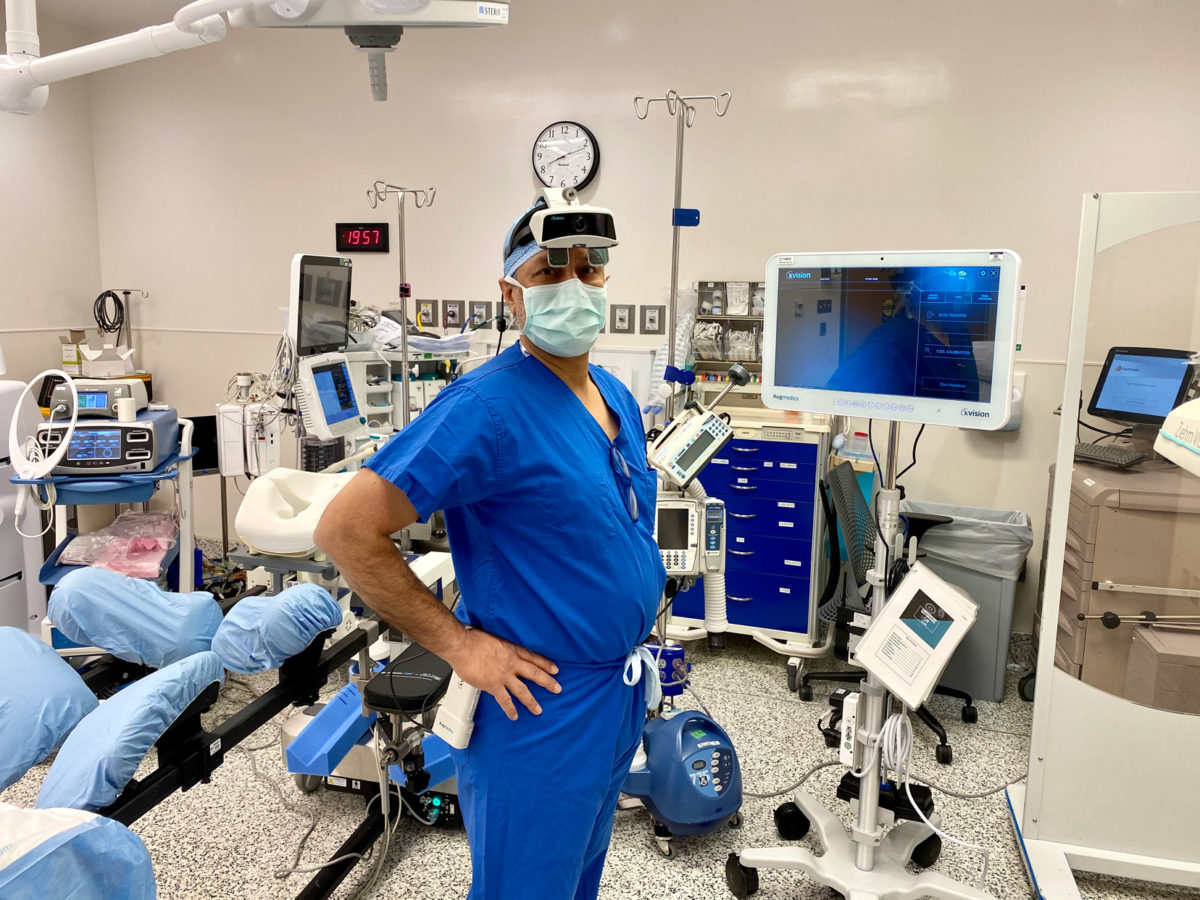“X-ray vision” has become a reality for spine surgeons at the HSS Orthopedics at Stamford Health.

Somewhat hyperbolic, perhaps ”” the technology is considerably more complicated than what was promised in the “X-Ray Specs” ads that used to appear in the back of comic books ”” but the advanced computerized augmented-reality (AR) navigation technology does involve a transparent display headset fitted with AR eyeglasses.
The headset enables surgeons to determine the position of surgical tools in real time by superimposing the patient”™s CT scan or X-ray images over the surgical site, and projects 3D navigation data onto the surgeon”™s retina.
The result, according to HSS Spine co-Chief Harvinder Sandhu, saves time and makes the surgeon”™s job easier.
“It makes surgery very precise,” he told the Business Journal. “The technology allows us to see through the tissue. It”™s a little like a GPS system ”” it tells us where we are and gives us a roadmap of where we need to go.”
Sandhu, who performed the first such surgery at Stamford Health”™s Bennett Medical Center campus on Jan. 28, said that while computer technology has long been used in surgery, “Up until now it involved looking back and forth from a computer screen with a two-dimensional view and the patient. Now we can concentrate on the patient and the 3D image rather than having to look at a screen.”
Sandhu, who estimates that he and his team have performed about a dozen AR spine procedures to date, said, “Some say doctors are behind the times in adopting technology. We all have technology in our pockets with our phones ”” kids can play very sophisticated video games on them ”” but we”™re really just starting to adopt a variety of technologies that are mostly centered on the idea of navigation.”
The surgeon said he first saw a demonstration of AR navigation technology several years ago, when prototypes included wearing a helmet. Today”™s version is less cumbersome, he said, noting that Stamford is the first hospital in the Northeast to adopt the technology.
“There”™s no question that recovery time is faster now, as we”™re making smaller incisions and don”™t have to expose all that anatomy,” Sandhu said. “Most importantly, by being less invasive, it makes it safer for patients.”
Brynn Layfield, a Norwalk veteran of the hospitality industry, was one of Sandhu”™s first patients to receive the AR-assisted surgery, having undergone a more traditional procedure several years ago to relieve sciatic pressure.
“I hadn”™t had any issues” after that surgery, she told the Business Journal. “Then I started having flare-ups once a year, then twice a year, and it got to the point where I was missing work on a regular basis.”
Cortisone shots would only go so far, Layfield said. “I was unable to stand up, and was facing more surgery,” she said. “So I started doing research and that led me to Dr. Sandhu.”
Thanks to the surgeon”™s careful explanation of the AR-assisted procedure and his “fantastic bedside manner,” Layfield elected to go forward. “I could stand and walk the day after” the surgery, she said. “It was mind-boggling.”
Layfield is due to start physical therapy in three months.
“There”™s really no convincing involved,” Sandhu said. “Basically we”™re still doing the same surgery, but with an added tool. The learning curve (for surgeons) is not very high, and we”™re already scheduling more surgeries over the next several months.
“We jokingly call it ”˜X-ray vision”™ ”” but it really is.”























